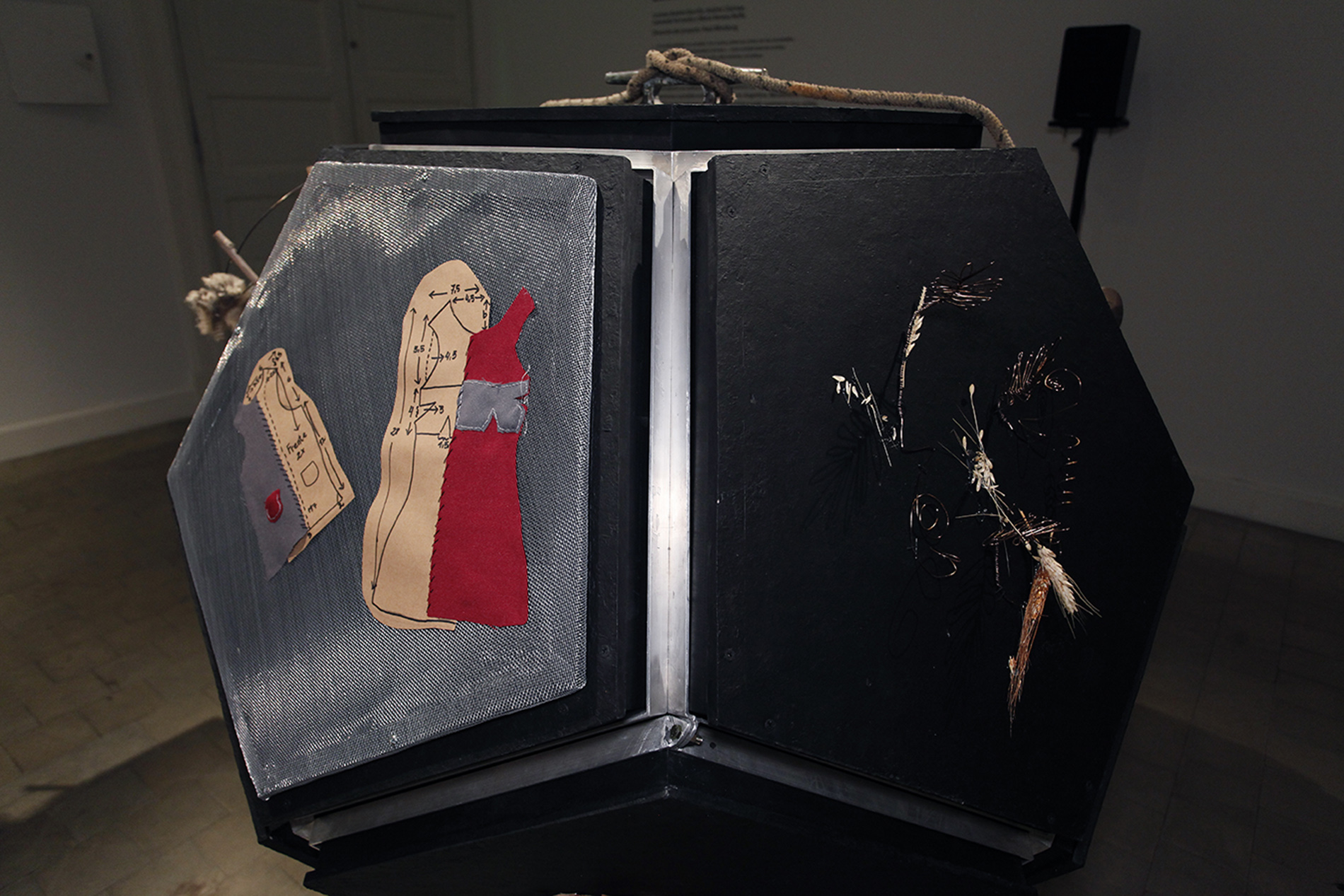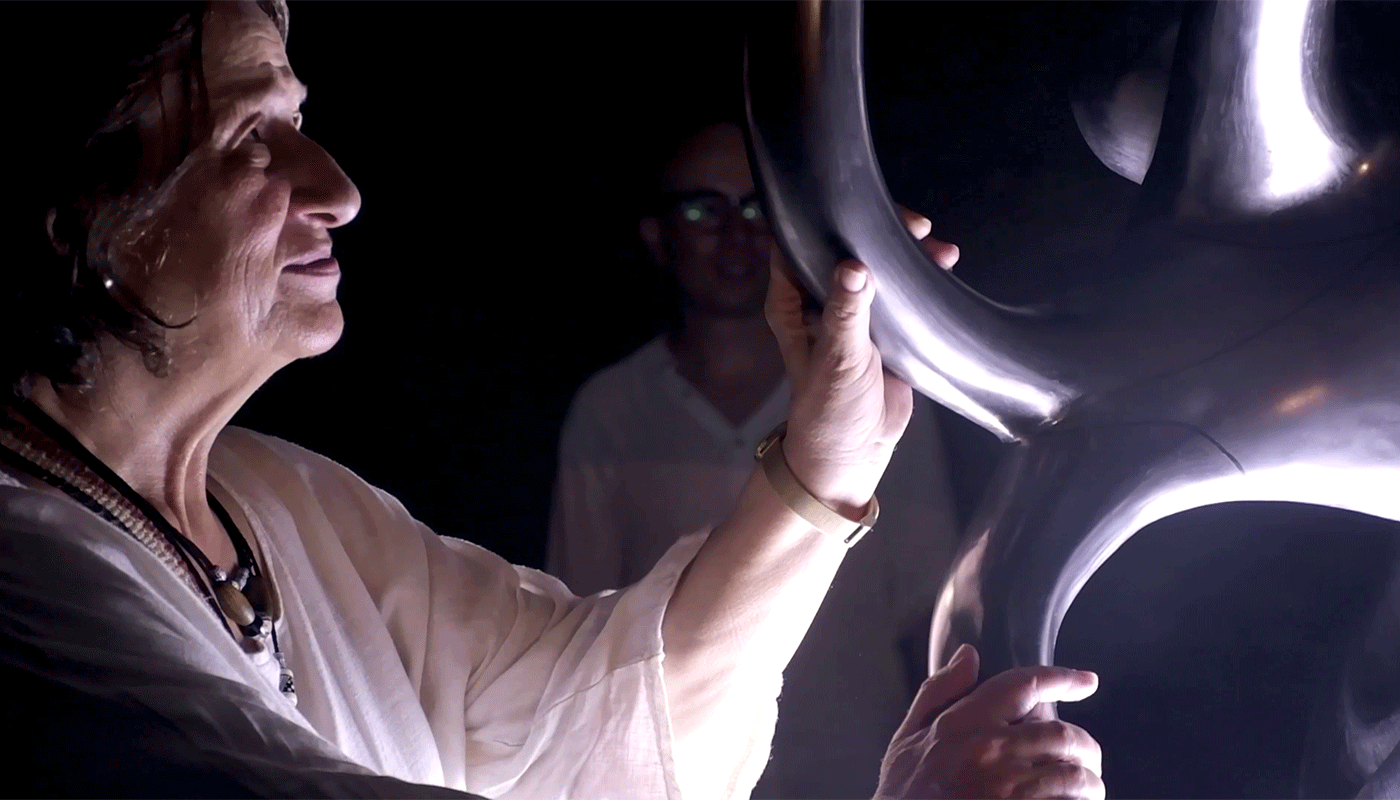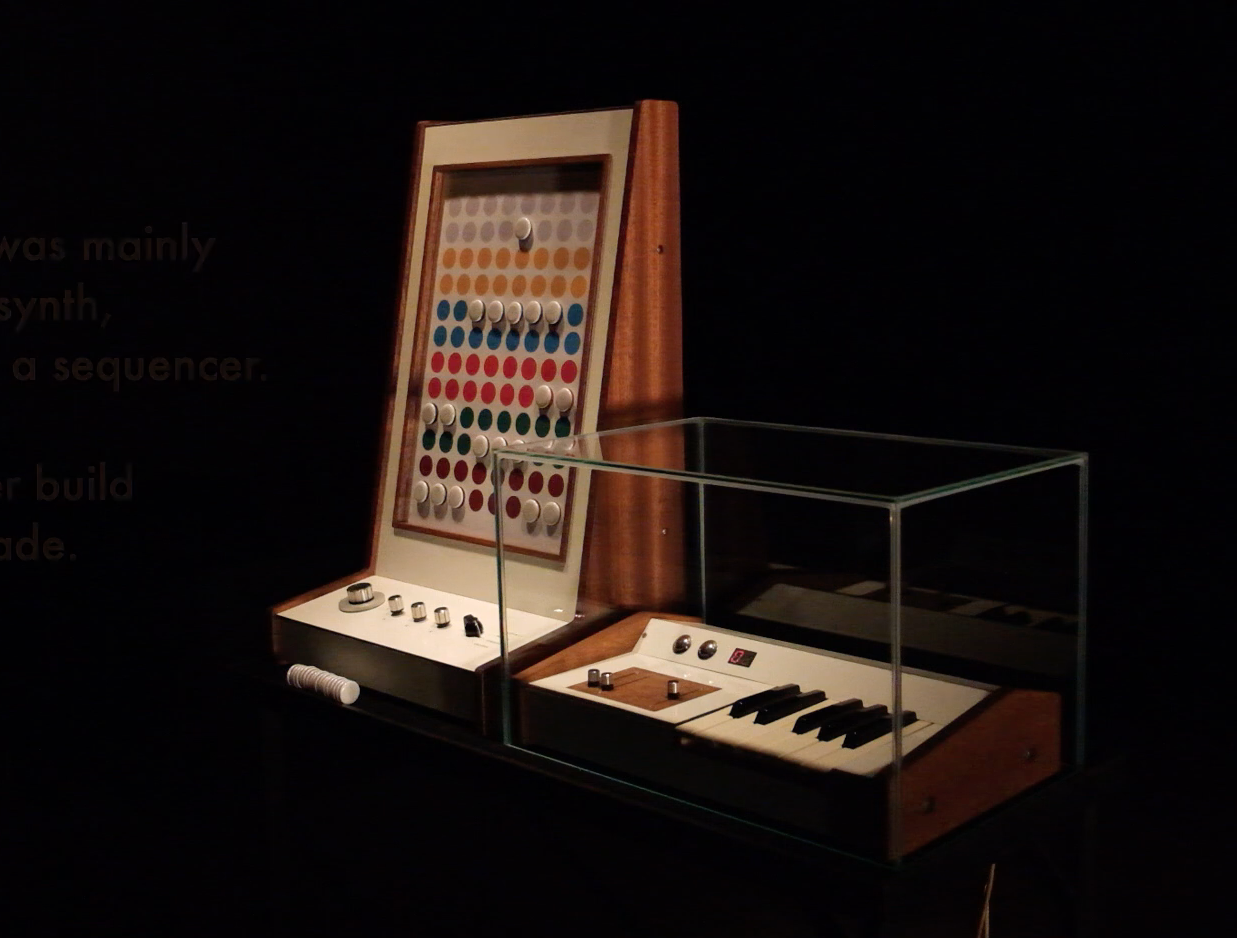[in.tangible]
Exploring indeterminism in sound art with a tangible and interactive installation
In this post Enrico Dorigatti talks us through the philosophical and technological underpinnings of their interactive sound installation [in.tangibile], created in collaboration with Linda Conforto. Over to Enrico:
The open artwork
[in.tangibile] is an interactive sound installation designed as part of my PhD research exploring indeterminism as a feature in sound art. Realised together with my colleague Linda Conforto, the installation aims to make it possible for the audience to freely explore the concept of sound (in)tangibility through the mediation of the installation itself.
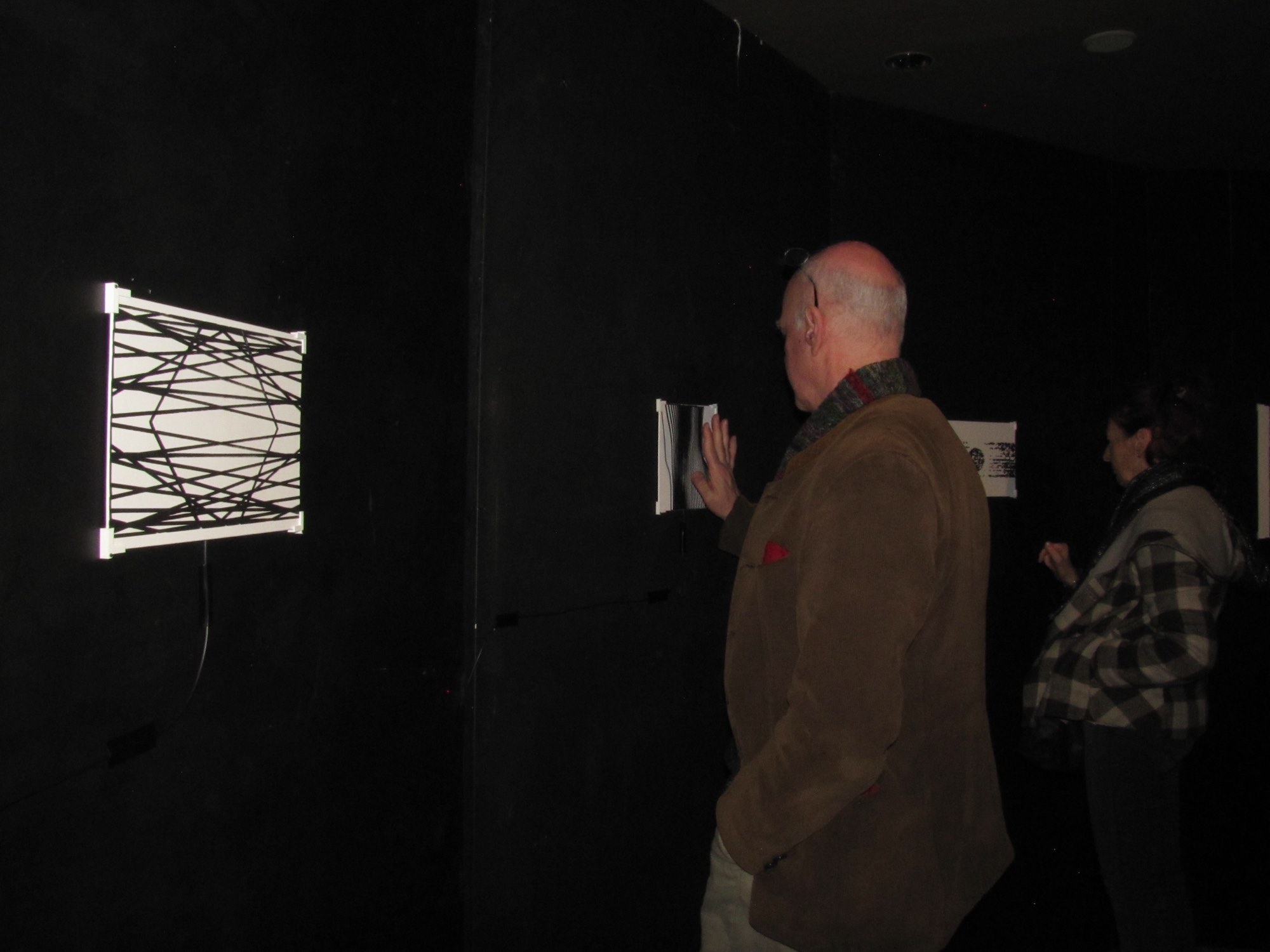
‘Free exploration’ of an artwork implies indeterminism as it is impossible to foresee how the audience will behave and, at the same time, it is important to notice that this agency over the output of the installation allows them to really shape their artistic experience. This is why the concept of open work as proposed by Umberto Eco is another pillar for this installation. For Eco, an artwork is, rather than a finished piece, an artefact which needs the interpretation of the audience to become ‘art’ (Umberto Eco, The Open Work).
Tangible experience of sound
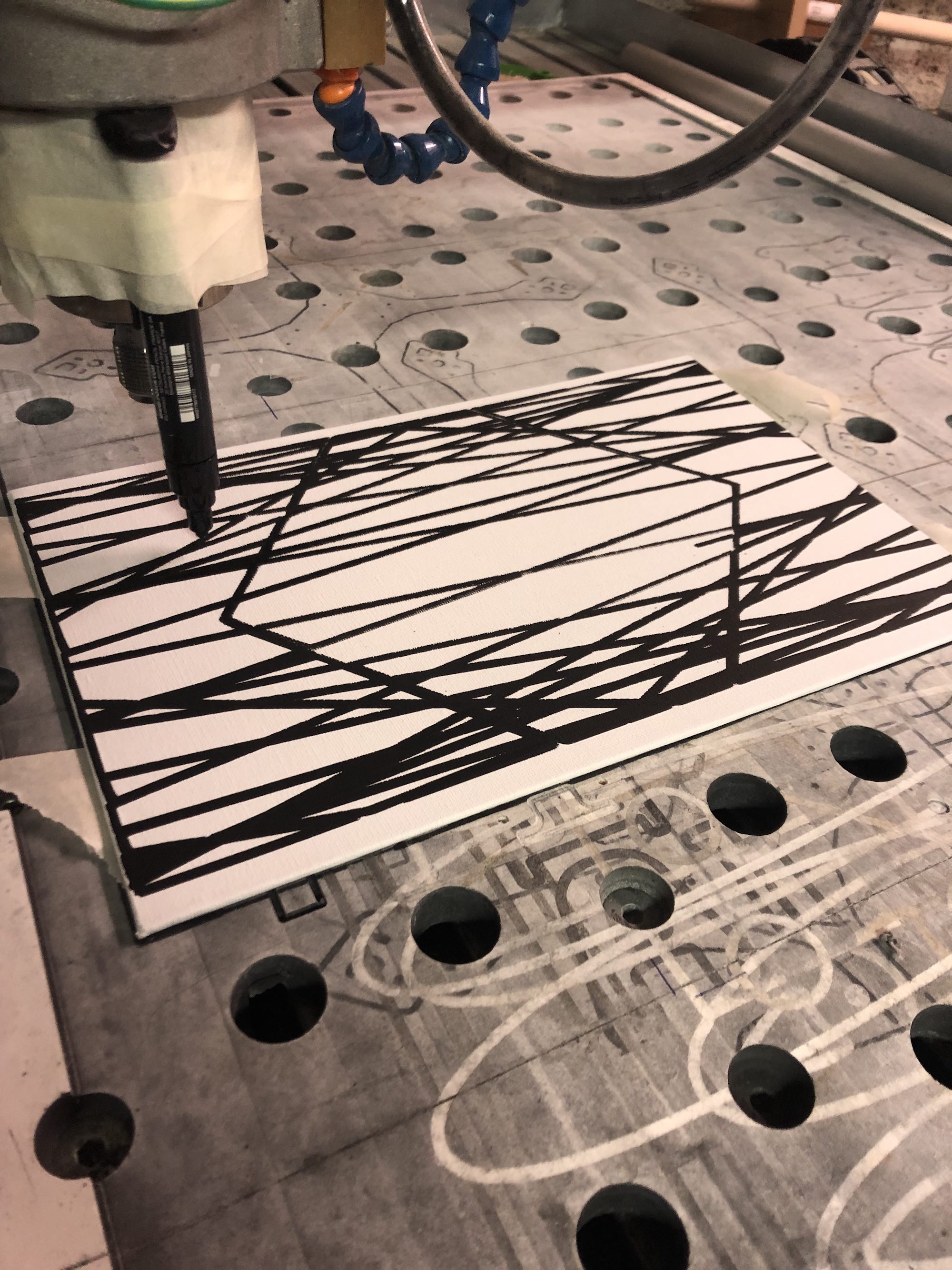
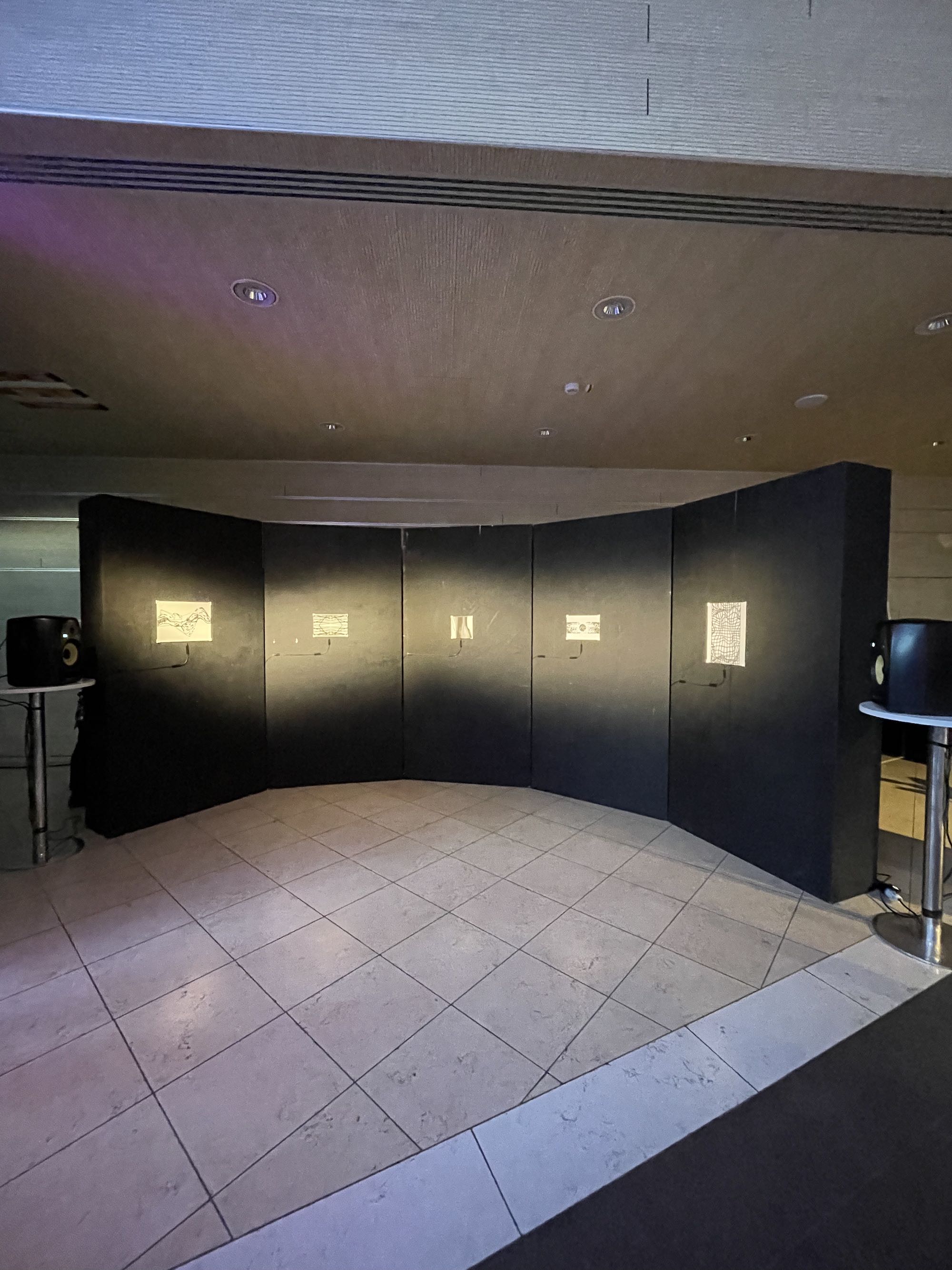
For the realisation of [in.tangibile], we wanted to employ interactive solutions somehow embodying the exploration of the concept of sound (in)tangibility. We opted for capacitive sensing. As interfaces, we used white canvases painted with abstract and non-representational designs realised algorithmically in TouchDesigner. These were drawn through a CNC machine with the milling head replaced by a permanent black marker. We’d like to thank Daniele ‘Dorigas’ for helping us with that and for designing and realising some great 3D-printed angular supports for the canvases/interfaces. To make the canvases usable with capacitive sensing, their backside was covered in aluminium foil, with more material placed just behind the designs.
Building the installation
The ‘brain’ of the system is a Bela Mini managing the installation under the hood, expanded through the Multichannel Expander and the Trill Craft, which offers an array of 30-channel capacitive sensing. We loved working with the Bela for many reasons: its ability to connect the real to the virtual world and back, its modularity and expandability, and the ultra-low audio latency, just perfect when dealing with real-time audio and interaction. Especially we enjoyed the possibility of programming it through different programming languages: C++, SuperCollider, and Pure Data.
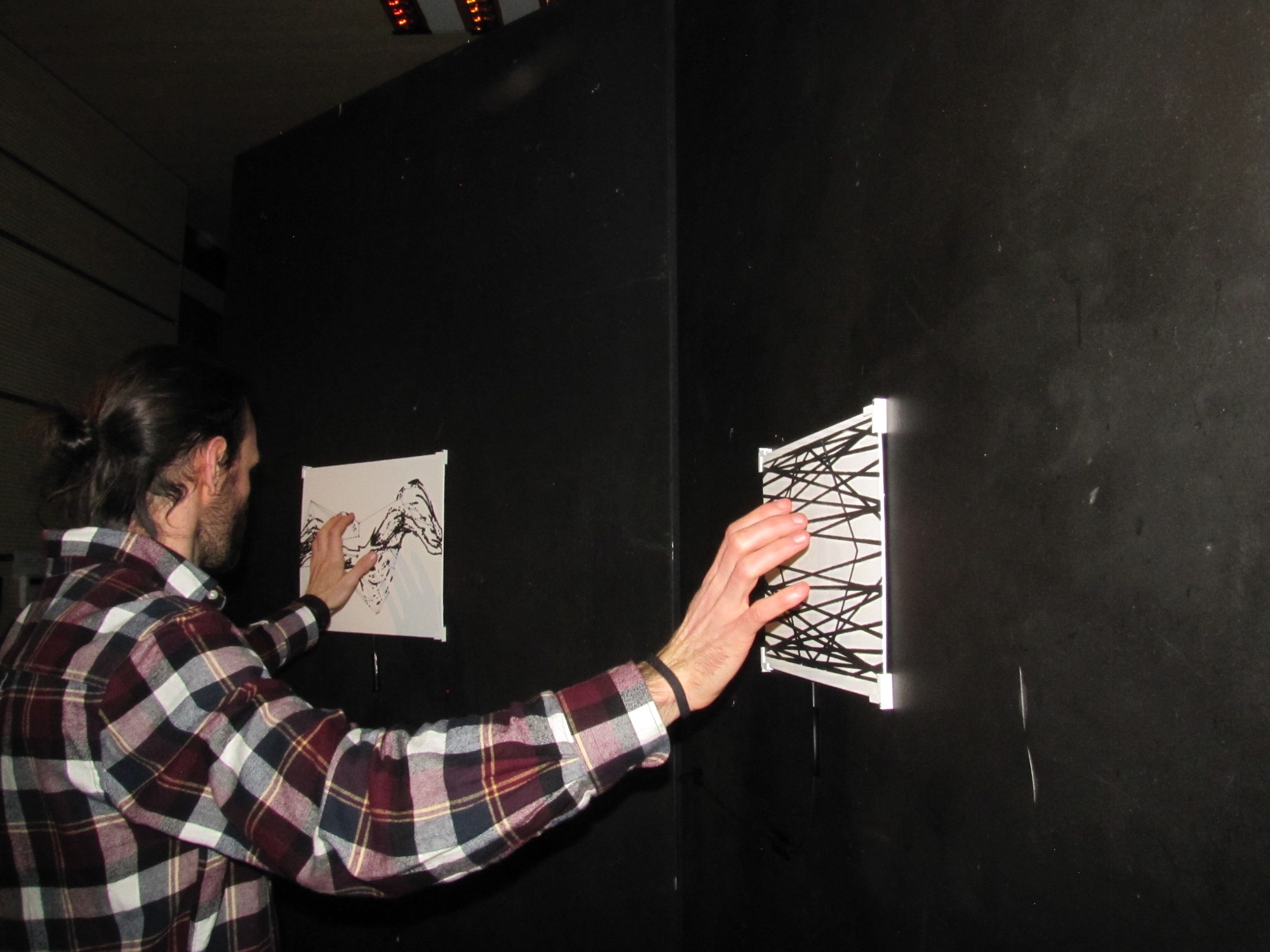
I (Enrico) have a formal background in programming, but when there is to work on an artistic project, I prefer focusing on its artistic features rather than on the technical aspects supporting them. That’s why we used SuperCollider, which, in our vision, blends optimally the robustness, potential, and flexibility of a general-purpose programming language (as C++) with the level of abstraction necessary to focus on the audio, interactive, and—in general—artistic aspect of the project (as Pure Data). ‘Flexibility’ is probably the keyword we would use to describe our experience with the Bela, which, from the hardware to the software side, offers plenty of headroom to accommodate artists’ needs and workflow.
Programming in SuperCollider
The SuperCollider sketch takes advantage of a granulator working on databending-derived audio samples (created by interpreting a picture as audio data). As Dan Overholt states, “The crux of a designer’s role in developing an expressive DMI lies in how the sensor data from that interface is mapped to the DSP algorithm’s parameters. Mapping is both an artistic and technical process, sometimes leading to idiosyncratic outcomes.” (from introduction Filimowicz, Designing Interactions for Sounds and Music) and finding solutions to map the data from the interfaces/canvases to the granulator parameters involved the realisation of complex routing and control systems.
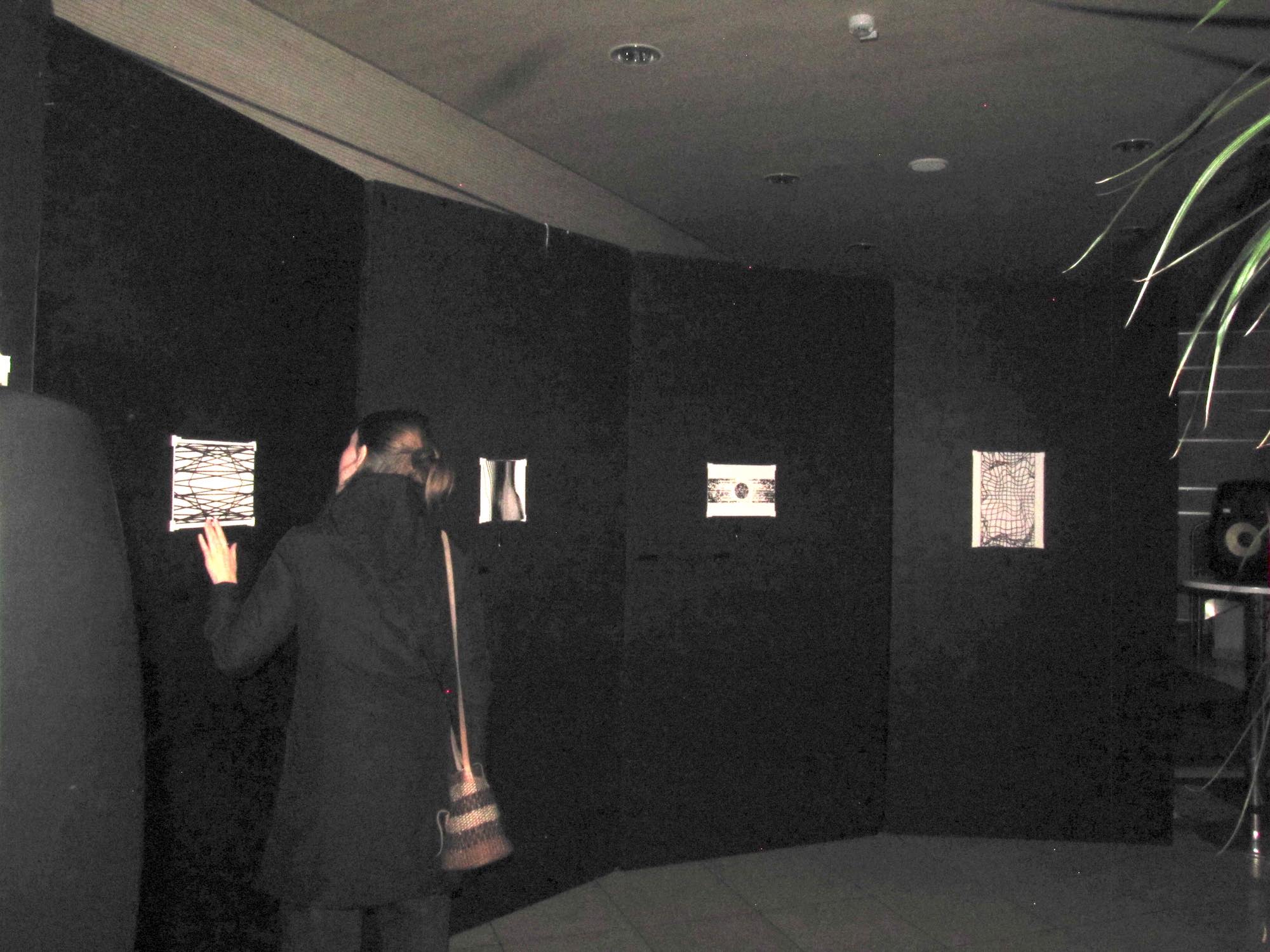
Eventually, we achieved a system in which each interface controls each parameter of the granulator, with a weighting (action range) which is lowered as the number of interfaces explored simultaneously increases. This avoids data clipping when all the interfaces register interaction, and simultaneously avoids the impossibility to fully control the sound when only a few are explored haptically. The system is responsive to proximity and contact alike, providing the feeling similar but different to interacting with physical objects. We also designed a generative background sound engine providing an evolving yet static ambient sonification for when no interaction takes place.
About Linda and Enrico

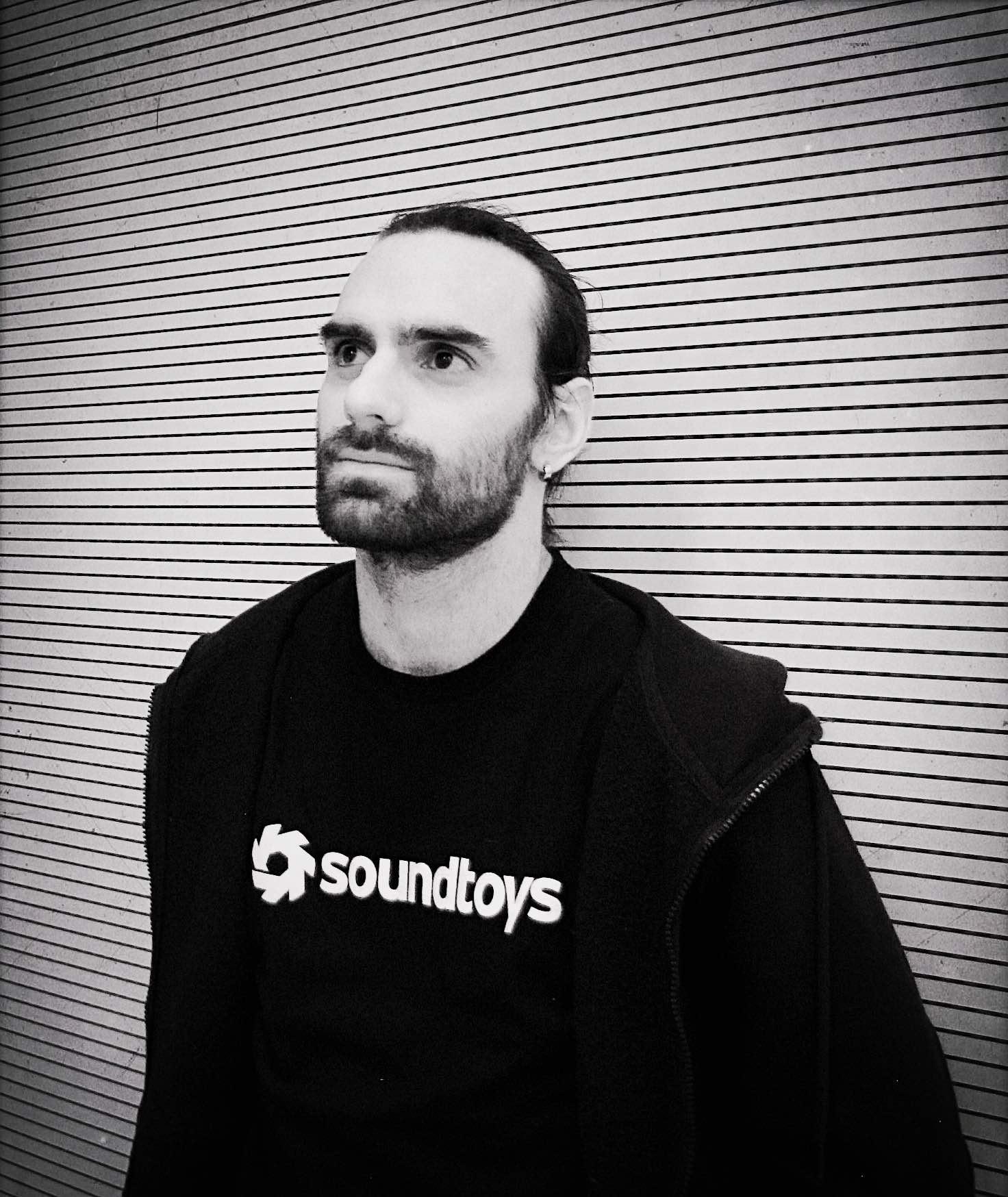
Linda Conforto is a sound artist particularly interested in multimedia installations. Former classical flautist, she later began to explore the possibilities offered by new technologies applied to music. She is currently enrolled at the F.A. Bonporti Conservatory of Trento as a BA student in electronic music, investigating, in particular, the art of multimedia installations under the guidance of Federico Ortica and programming languages for audio with Mauro Graziani. She attended masterclasses and seminars held by leading experts and artists.
Enrico Dorigatti is a sound artist and creative technologist working across different formats. He is especially interested in the artistic exploration of indeterminism, audio-visual interaction, generative systems, and shared agency between humans and machines. Formerly a conservatory graduate (BA and MA in electronic music), he is currently a PhD candidate in creative technologies at the University of Portsmouth (UK). His artistic and scholarly output has been presented internationally.

![[in.tangible]](/images/intangible/interaction_5.jpg)
